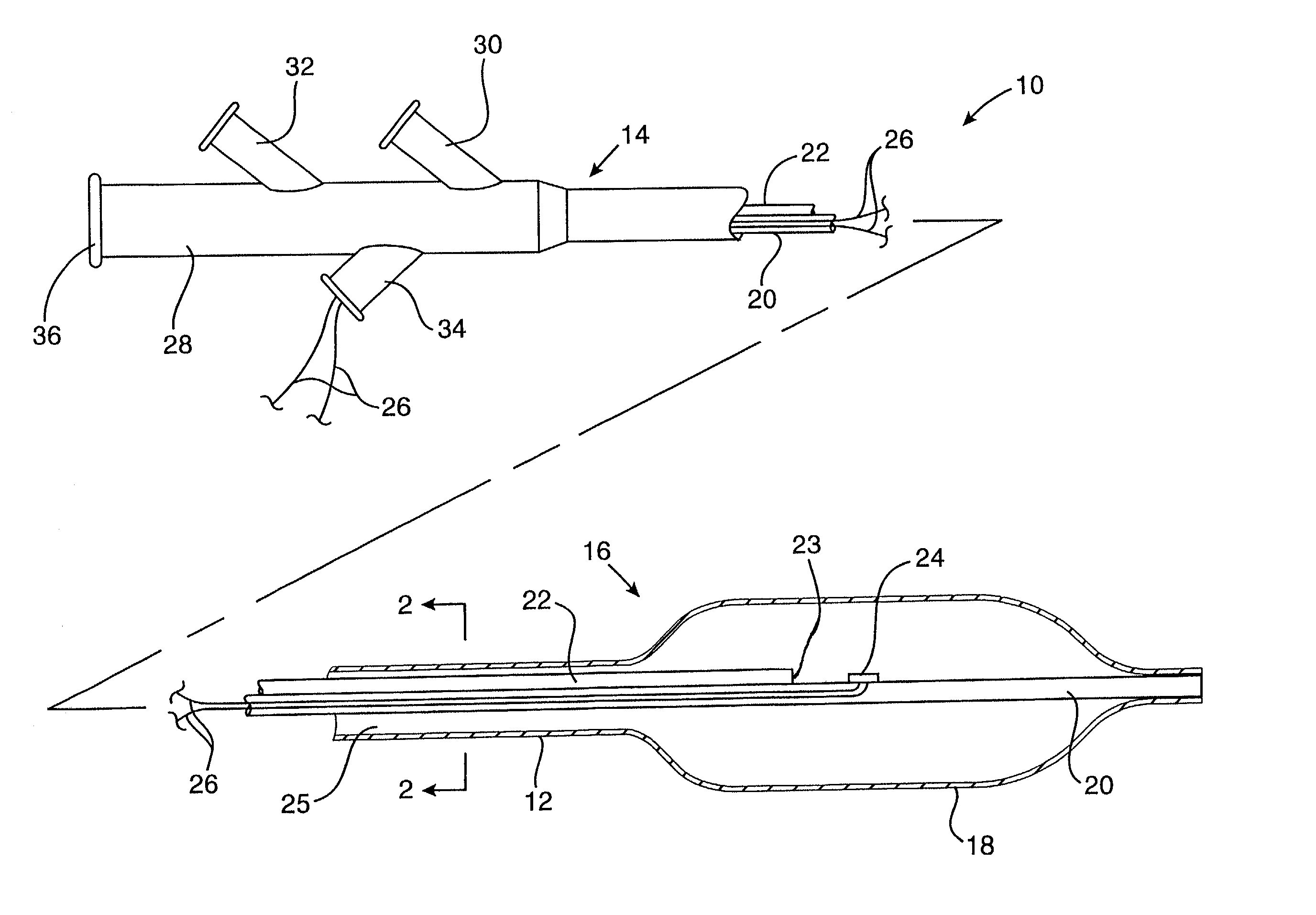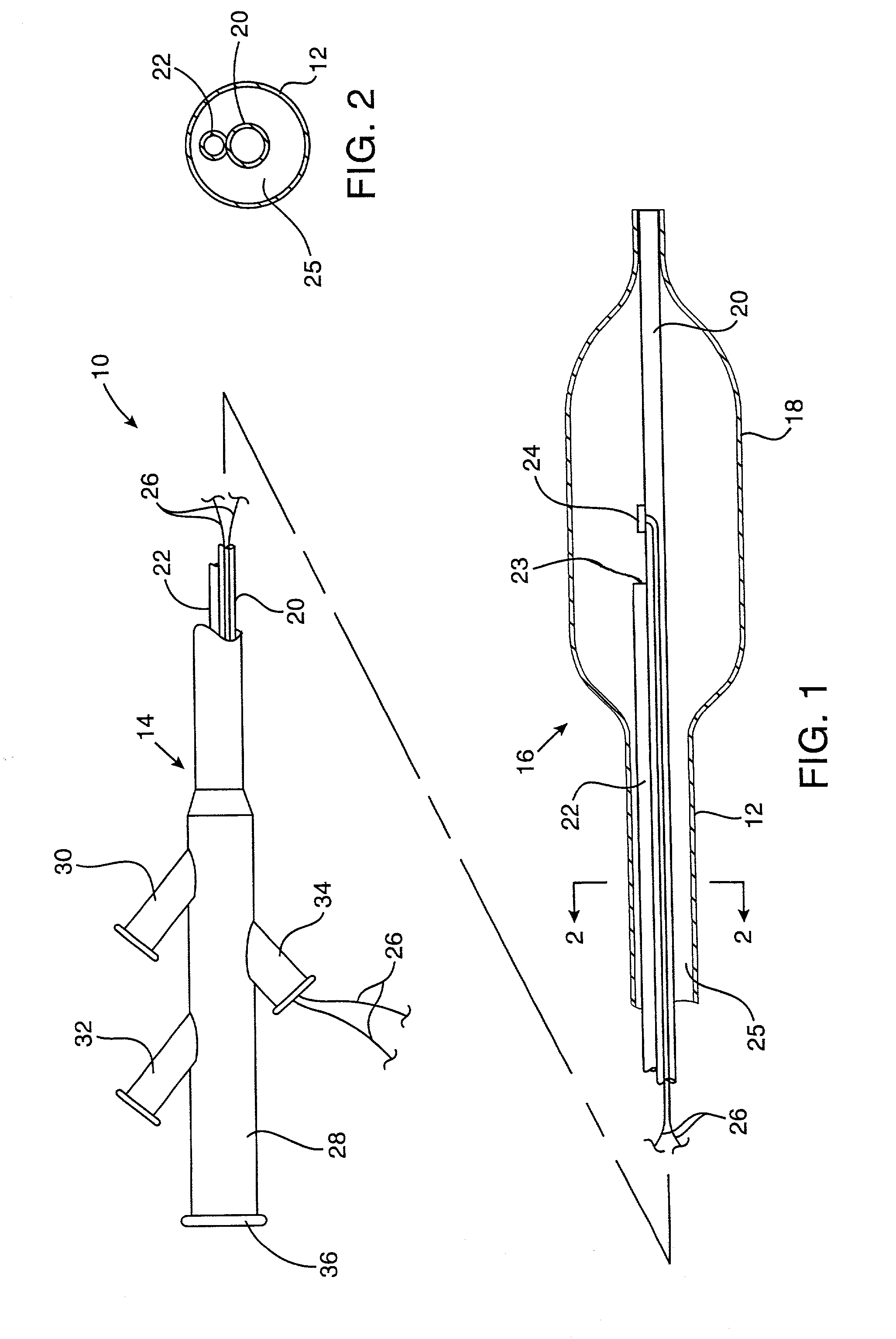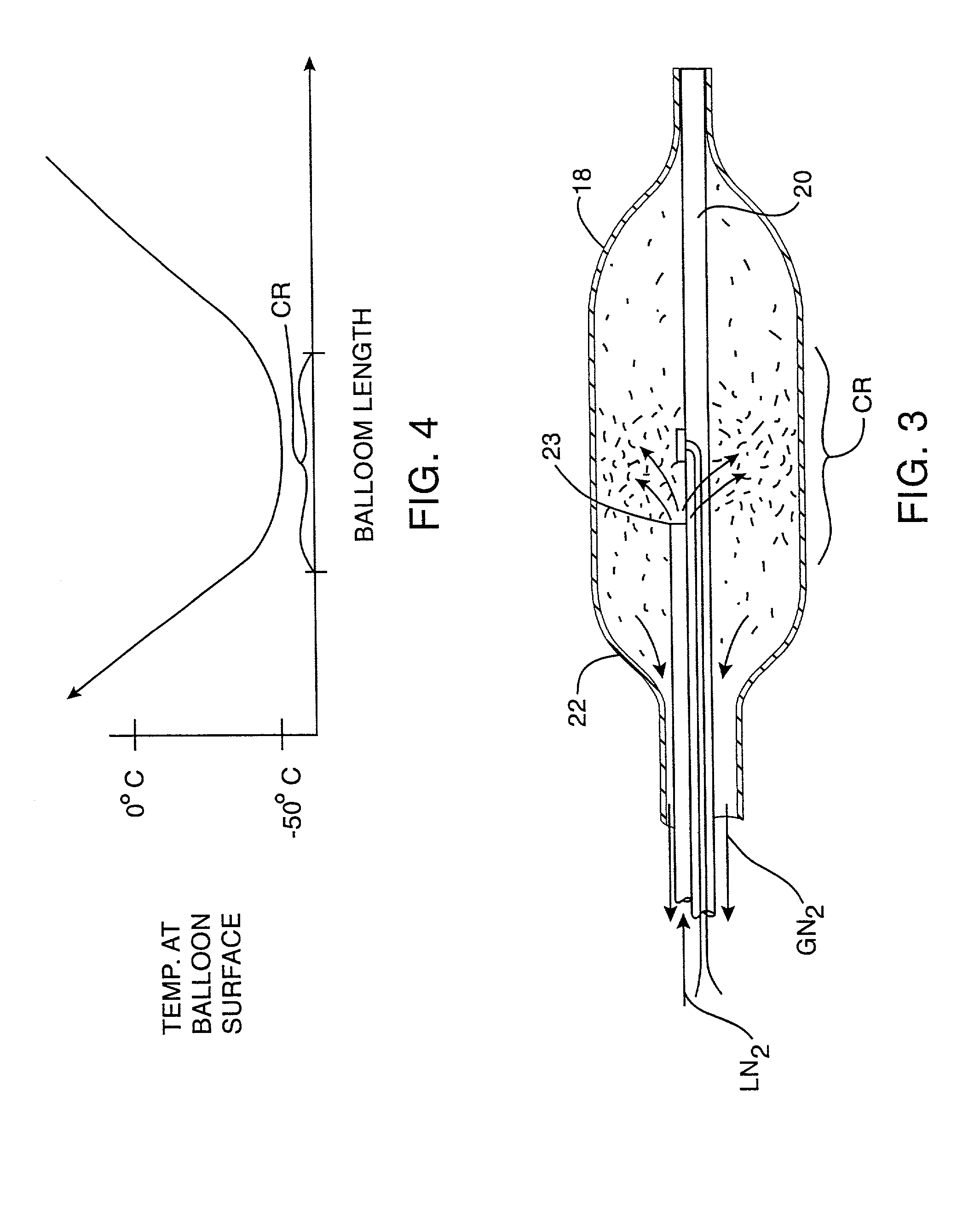Apparatus and method for cryogenic inhibition of hyperplasia
a cryogenic inhibition and apparatus technology, applied in the field of apparatus and method for cryogenic inhibition of hyperplasia, can solve the problems of significant temperature transients, undesirable cell necrosis,
- Summary
- Abstract
- Description
- Claims
- Application Information
AI Technical Summary
Benefits of technology
Problems solved by technology
Method used
Image
Examples
Embodiment Construction
[0040] An exemplary cryosurgical catheter 10 constructed in accordance with the principles of the present invention is illustrated in FIGS. 1 and 2. The catheter 10 comprises a catheter body 12 having a proximal end 14, a distal end 16, and an inflatable balloon 18 disposed at the distal end. The balloon 18 is shown to be an integral extension of the catheter body 12, but such a structure is not required by the present invention. The balloon could be formed from the same or a different material and, in the latter case, attached to the distal end of the catheter body 12 by suitable adhesives, heat welding, or the like. The catheter body may be formed from conventional materials, such as polyethylenes, polyimides, and copolymers and derivatives thereof. The balloon may also be formed from conventional materials used for angioplasty balloons, typically being non-distensible, such as polyethylene terephthalate (PET).
[0041] Catheter 10 comprises a central shaft 20 which may be formed fro...
PUM
 Login to View More
Login to View More Abstract
Description
Claims
Application Information
 Login to View More
Login to View More - R&D
- Intellectual Property
- Life Sciences
- Materials
- Tech Scout
- Unparalleled Data Quality
- Higher Quality Content
- 60% Fewer Hallucinations
Browse by: Latest US Patents, China's latest patents, Technical Efficacy Thesaurus, Application Domain, Technology Topic, Popular Technical Reports.
© 2025 PatSnap. All rights reserved.Legal|Privacy policy|Modern Slavery Act Transparency Statement|Sitemap|About US| Contact US: help@patsnap.com



